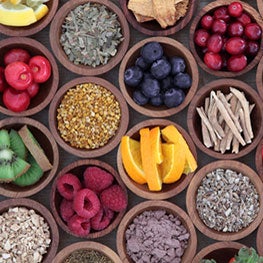How To Increase Your Daily Protein Intake

Protein from foods is a vital part of our diet. It’s responsible for the growth, maintenance and repair of cells in the body — which is why it is so important we meet our recommended daily protein intake.
Not only that, but a protein-rich diet is thought to have a range of benefits, such as helping us to achieve our optimal weight, improve our body composition, and stay in good health.
If you don’t think you currently have enough protein in your diet or you wish to increase your daily protein intake for whatever reason, keep reading to learn more.
In this article, we’ll be looking at how to increase daily protein intake easily so that you can get as much benefit as possible from this vital nutrient.
To find out more about protein, read our ‘What Is Protein & Why It Is Important’ guide.
The benefits of protein
Protein doesn’t just benefit our health — it is essential to keeping our bodies functioning. We use protein to maintain and repair tissues in the body, support growth in children, produce hormones, build muscle mass, keep bones healthy, and more.
There are many health benefits to eating a diet rich in protein.
Here are just some of the benefits of protein:
- May assist with weight management
- Growth and maintenance of muscle mass (important when you are older)
- Repairing and building tissues
- Aiding recovery after sports and physical activity
- Maintaining healthy bones
- May help reduce feelings of hunger
Increasing your daily protein intake can help you to maximise these associated health benefits.
How much protein should I have?
If you’ve read the benefits of protein above and you want to find out how to increase your daily protein intake, your next question will probably be, “how much protein should I have?”
The answer isn’t necessarily clean-cut. Everyone needs different amounts of protein, depending on things like your age, gender, fitness levels and health goals.
The recommended daily intake (RDI) for protein is 0.75-0.94g protein per 1kg of body weight per day (and even more for pregnant and lactating women).
However, it is worth noting that this isn’t the daily limit of how much protein we could have. In fact, it’s actually more like the minimum amount of protein that we need to meet our basic nutritional needs (for healthy individuals).
Certain individuals may required even more protein (if they are athletes or have certain medical conditions) and thereore a high amount of protein may be required to fully see the benefits. A high protein diet where protein intake is distributed evenly across meals is thoughts to optimise protein usage and help us function at our best.
Protein intake calculator
We all need a different amount of protein depending on a number of physical factors, such as our age, gender, overall health and level of activity.
Your own personal goals and aspirations can play into your recommended protein intake too. You may want to lose weight, maintain a certain weight, or gain muscle mass (sometimes referred to as ‘bulking’).
Using our protein intake calculator can help you work out how much protein you need every day more accurately.
How to increase protein intake
If you want to know how to increase protein intake, the good news is that it doesn’t have to be difficult!
There are all sorts of ways to include more protein in your diet easily, simply by making small changes (substituting certain foods) or adding specific protein powerhouse foods into your diet.
Here are some helpful tips on how to increase protein intake:
- Replace your morning cereal with eggs — compared to cereals, eggs are really high in protein, so having scrambled or poached eggs in the morning will help you bump up your protein intake.
- Top up meals with chopped nuts and seeds for a quick and easy protein boost.
- Snack on cottage cheese, which is high in protein and low in fat. You can eat it with crackers or with celery and carrot sticks for a healthy mid-afternoon snack.
- Start your morning with a protein shake or high-protein smoothie. Using a nutritional supplement like Sustagen Hospital Formula that is high in protein is a really easy way to add more protein to your diet.
- Increase the size of your meat portions — but make sure you stick to lean cuts to avoid increasing your fat intake too.
- For a cheap and convenient protein source, eat canned fish like tuna or salmon. These are also relatively low-calorie while being high in beneficial omega-3 fatty acids.
- Swap out refined grains like white rice for whole grains like wild rice, quinoa or couscous. As a side note, grains are also rich in fibre (take a look at our dietary fibre guide for more information).
Getting enough protein in your diet can sometimes feel tricky, but following these simple tips can help achieve your daily protein intake much easier.
Guidelines for optimising your high protein diet plan
Adopting a high protein diet isn’t just about increasing your daily protein intake in whatever way you can. There are steps that you can take to make the most of following a protein-rich diet as healthy as possible.
Try following these guidelines when it comes to creating a protein diet plan to optimise your protein intake:
- Include a rich source of protein in each meal, including breakfast. Most Australians tend to get the majority of their protein from their evening meal, but a higher protein breakfast can help to control appetite, keep you fuller for longer, and curb cravings. Take a look at our protein breakfast guide for more information.
- Try to evenly distribute your protein intake throughout the day. Aim for at least 25-30g of protein in each meal to avoid concentrating all protein consumption into one occasion.
- Aim for a variety of protein sources in your diet plan. Having a well-balanced, rounded diet that includes a range of protein sources will help you to get all of the essential amino acids your body needs — and hit all of your other nutrient goals as well.
- Choose high-protein whole foods as snacks. Sticking to whole foods such as nuts, seeds, fruit and veg for snacks in-between meals helps you to boost your protein intake while getting a range of healthy nutrients.
Following these guidelines will help you to shape your high protein diet plan and really benefit from your daily protein intake in the best way possible.
10 great sources of protein
Increasing your daily protein intake doesn’t necessarily have to mean only eating the best sources of protein, but finding good sources of protein can help.
If you’re looking for ways to bump up your daily protein intake, here are 10 high-protein sources to easily incorporate into your diet:
- Chicken or turkey breast: 30g protein per 100g serving
- Tuna: 29g protein per 100g
- Lean beef: 36g protein per 100g
- Prawns: 23g protein per 100g
- Egg: 7g protein per 1 large egg
- Cottage cheese: 28g protein per 1 cup serving
- Soybeans: 29g protein per 1 cup serving
- Lentils: 18g protein per 1 cup serving (cooked)
- Pumpkin seeds: 9g protein per 28g serving
- Nutritional supplements: 9.5-15g per serving (can vary depending on the product)
For more information on great protein sources, including sources of high protein for those following vegetarian or vegan diets, head over to our sources of protein guide.
Sources
- https://www.nrv.gov.au/nutrients/protein
- https://pubmed.ncbi.nlm.nih.gov/16002798/
- https://pubmed.ncbi.nlm.nih.gov/20847729/
- https://academic.oup.com/ajcn/article/87/5/1558S/4650426
- https://www.health.harvard.edu/blog/how-much-protein-do-you-need-every-day-201506188096
- https://www.webmd.com/diet/features/top-10-protein-foods




